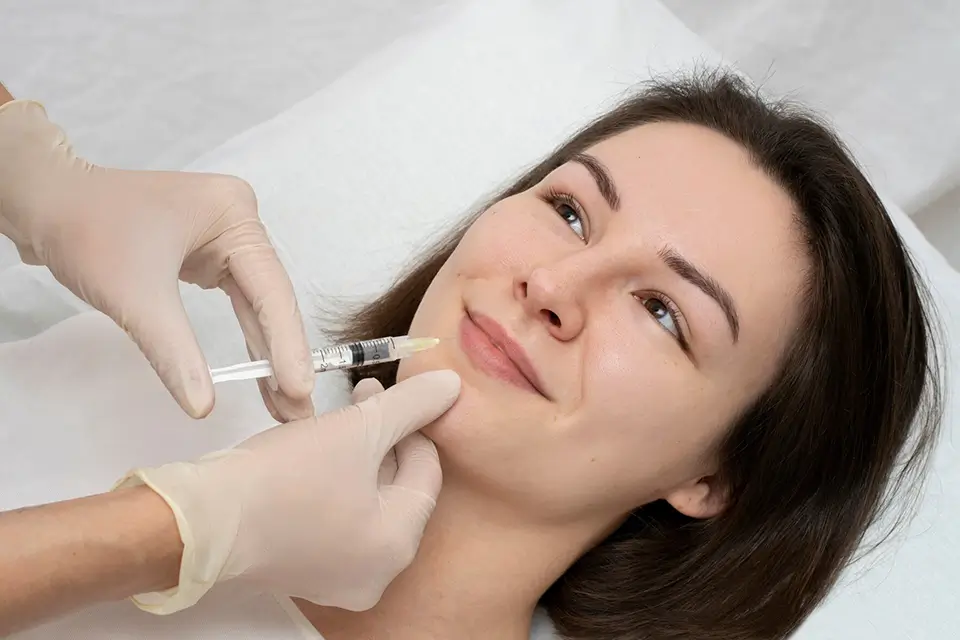The Origins of Botox: A Simple Guide
Botox, a word that’s become synonymous with smoother skin, actually has an interesting and complex history. It all starts with botulinum toxin, a substance produced by a bacterium called Clostridium botulinum. While the term “toxin” might sound scary, in carefully measured doses, this compound has proven to be incredibly useful both medically and cosmetically.
A Discovery with a Twist
Botulinum toxin was first identified in the late 1800s when scientists traced it to cases of food poisoning called botulism. This condition, caused by consuming improperly prepared foods, can lead to muscle paralysis and, in extreme cases, even death.
Fast forward to the 1970s, when researchers discovered that one type of this toxin—botulinum toxin type A—could actually help with muscle-related conditions. By 1989, the U.S. Food and Drug Administration (FDA) had approved Botox to treat medical issues like crossed eyes (strabismus) and uncontrollable blinking (blepharospasm). Then, in 2002, Botox made its big debut in the cosmetic world, earning FDA approval to temporarily reduce wrinkles.
How Botox Works
At its core, Botox is a neurotoxin that temporarily blocks signals from the nerves to the muscles. When injected, it prevents the targeted muscles from contracting. This smooths out wrinkles and can calm overactive muscles.
Dr. Brown, a certified injector in Kelowna, BC. explains, “Botox works by stopping the release of acetylcholine, a chemical that triggers muscle contractions, which is why it’s so effective for both wrinkles and medical treatments.” The effects wear off in three to six months, so repeat treatments are needed to maintain results.
Cosmetic Uses of Botox
Botox’s journey might have started with medical treatments, but it’s best known today for its cosmetic magic.
Smoothing Wrinkles
Botox is most effective for dynamic wrinkles—lines that form from repetitive muscle movements, like frowning or smiling. Popular treatment areas include:
- Bunny Lines: Wrinkles on the sides of the nose that appear when scrunching the nose.
- Lip Lines (Smoker’s Lines): Vertical lines above the upper lip caused by lip pursing or smoking.
- Marionette Lines: Lines that extend from the corners of the mouth down toward the chin.
- Gummy Smile: Excessive gum display when smiling.
- Chin Dimpling: “Orange peel” texture on the chin caused by overactive chin muscles.
- Jawline (Masseter): For reducing a square jaw appearance or managing teeth grinding (bruxism).
- Neck Bands (Platysmal Bands): Vertical lines or cords on the neck caused by platysma muscle tension.
- Eyebrow Lift: To achieve a subtle lifting of the eyebrows for a more youthful look.
- Nasolabial Folds (Smile Lines): Although primarily treated with fillers, Botox can assist in relaxing certain muscles around the area for a smoother appearance.
- Forehead Lines: Horizontal creases from raising eyebrows.
- Crow’s Feet: Fine lines at the corners of the eyes.
- Frown Lines: The vertical “11” lines between the eyebrows.
For wrinkles that are already deeply set (called static wrinkles), additional treatments like dermal fillers may be recommended.
Preventative Botox
A newer trend is starting Botox treatments in your 20s or 30s to stop wrinkles before they form. By relaxing muscles early, dynamic lines are less likely to become permanent.
Enhancing Facial Features
Botox isn’t just about wrinkles. It can also subtly enhance features, like lifting the brows or softening a “gummy smile” by relaxing certain facial muscles.
Medical Marvels
Beyond beauty, Botox is a powerful tool for treating various medical conditions. Here are just a few ways it’s used:
Chronic Migraines
Botox can help reduce the frequency and intensity of migraines by calming overactive nerve signals. Treatment involves multiple injections around the head, neck, and shoulders.
Hyperhidrosis (Excessive Sweating)
For those dealing with excessive sweating, Botox offers relief by blocking the chemical signals that activate sweat glands, particularly in the underarms, hands, and feet.
Overactive Bladder
Botox can also calm an overactive bladder by relaxing the bladder muscles, reducing urgency and frequency issues.
Muscle Spasms
Botox’s earliest medical use was for treating muscle spasms, and it continues to help with conditions like neck spasms (cervical dystonia) and eyelid spasms (blepharospasm).
Strabismus (Crossed Eyes)
One of Botox’s first FDA-approved uses, this treatment temporarily relaxes overactive eye muscles, helping to realign the eyes.
Is Botox Safe?
When performed by a licensed professional, Botox is considered safe for most people. However, as with any procedure, there are some risks, such as bruising, headaches, or drooping eyelids. Rarely, the toxin may spread beyond the injection site, causing temporary muscle weakness.
Dr. Brown advises, “Always choose a qualified provider to minimize risks and achieve the best results.” Avoid untrained practitioners or self-administering Botox, as this can lead to complications.
Alternatives to Botox
Botox isn’t the only botulinum toxin on the market. Other options include:
- Dysport: Similar to Botox but spreads more easily, making it ideal for larger areas.
- Xeomin: A purified version without extra proteins, potentially reducing the risk of resistance.
- Jeuveau: Marketed specifically for cosmetic treatments, it’s often nicknamed “Newtox.”
Your provider can help you choose the best option for your needs.
Dosages for Different Needs
Botox dosages vary depending on the treatment:
- Cosmetic: A few units (10-30) are typically enough for forehead lines or crow’s feet.
- Medical: Higher doses (up to 155 units) may be needed for conditions like migraines or muscle spasms.
Your doctor will determine the appropriate dosage based on your condition and goals.
Who Should Avoid Botox?
While Botox is generally safe, some people should avoid it:
- Pregnant or breastfeeding individuals.
- Those with neurological disorders.
- Patients with active infections near the injection site.
- People allergic to any of Botox’s ingredients.
Always discuss your medical history and medications with your provider to ensure Botox is right for you.
Botox’s journey from a deadly toxin to a medical and cosmetic game-changer is nothing short of remarkable. Whether you’re looking to smooth out wrinkles or ease migraines, stop excessive sweating, Botox offers a safe and effective solution—when administered by qualified professionals.



